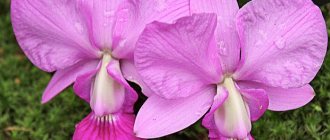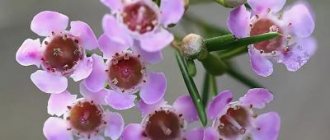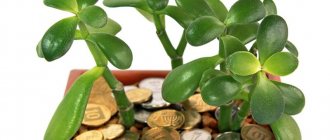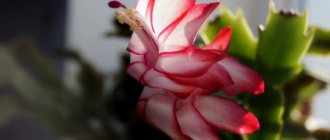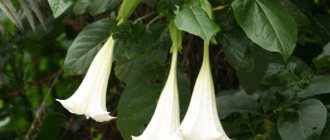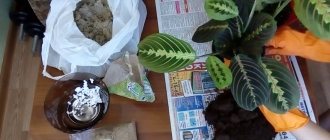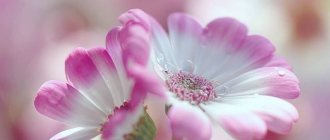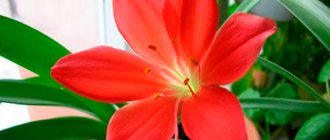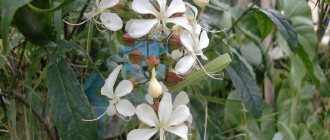The orchid, which has captivated many with its grace, has an equally beautiful history of its appearance. Scientists believe that representatives of this family grew on Earth a hundred million years ago, and, according to legend, the first such flower appeared in the place where the goddess of love Aphrodite lost her slipper. Nowadays, according to psychologists, a blooming orchid can act as a healer for depression.
In the modern world, there are tens of thousands of species of the orchid family. They are successfully grown in various parts of the world, becoming an adornment not only of wild nature, but also an asset to gardens, greenhouses and flower beds. These sophisticated plants require not only careful care, but also proper protection, since many of their species are endangered.
Here is a selection of the most beautiful representatives of the family, designed to conquer the most skilled flower growers.
Phalaenopsis or "Fluttering Butterfly"
This most beautiful type of orchid, shaped like a butterfly in flight, has gained popularity not only because of its exquisite appearance, but also because of its ease of care. Another advantage of the plant is the length of the flowering period, reaching six months. Many of them are easily adapted at home and can be covered with flowers all year round.
Phalaenopsis gains particular popularity during the celebration of March 8th. Many men, captivated by the elegance of this flower, choose it as a gift to close women.
In the wild, the Fluttering Butterfly can be found in countries such as India, Myanmar and Vietnam.
What types of orchids are there: the most popular types for the home
Orchids have many varieties and hybrids. They are chosen for the home greenhouse for the wonderful aromas of the petals and the bizarre shapes of the flowers. We have prepared a selection of the most popular varieties of orchids with photos, names and descriptions.
1. Wanda
One of the largest varieties, the stem can reach a height of up to 1 m. It has no dormant period, therefore, under favorable conditions, it blooms all year round. Many people grow Vandas specifically for making bouquets. If you cut them and put them in water, they stay fresh for an average of two weeks. In the aroma, spicy notes are sometimes replaced by juicy grapes.
Vanda flowers have a peculiarity: when they just begin to bloom, they seem completely inconspicuous, but within a few days the shade becomes more and more saturated. Their diameter is from 10 to 15 centimeters. Depending on the variety, the flowers are white, pink, purple, orange and even blue; unusual two- and three-color colors are also found.
This species loves high humidity of 80% and feels comfortable at a temperature of 16-29 degrees. If the room is very hot, it may die. No soil or substrate is required for planting.
Instagram @orchidsiulik
Instagram @loveorhid
- House plants
How to care for an orchid so that it will delight you with its beauty for a long time
Phalaenopsis
There is a beautiful legend about the discovery and name of this species: botanist Karl Blume was looking at the jungle through binoculars, and in the dark he mistakenly mistook orchid flowers for many butterflies. In memory of this incident, he named the genus Phalaenopsis
(phalania - “night butterfly”, opsis - “similarity”).
Phalaenopsis are divided into ordinary (up to 1 m in height) and miniature (up to 30 cm in height). Depending on the variety, the flowers come in different shades, with ornaments and inclusions. The lip, as a rule, stands out in contrast against the background of the other petals.
Under favorable conditions, phalaenopsis blooms even 3 times a year, the average duration is up to 4 months. They love diffused light and do well in a little shade, for example, behind a curtain. The maximum permissible air temperature is 42 degrees. Watering is needed after the soil has completely dried, as for other varieties. Phalaenopsis has aerial roots that branch above the ground. Therefore, you need to make sure that they do not fall into an adjacent pot with another plant.
Instagram @gip01orhid
Instagram @julie_lytvynenko
- House plants
9 Large, Spectacular Houseplants That Are Easy to Care for
Brassia
The flowers of this species have a very unusual shape, blooming in yellow, light green and light lilac shades. They are distinguished by variegated colors with beautiful contrasting splashes. Due to their thin and long petals, they resemble spider legs; their edges can reach 15 cm. They are fragrant with the delicate aromas of honey and vanilla.
Brassia can grow up to 50 cm in height and, under favorable conditions, blooms all year round. Loves “tropical” environments with high temperatures and is very sensitive to drafts. The minimum temperature in winter should not fall below 20 degrees. Unlike other types, it can withstand direct sunlight. Do not replant during flowering.
Instagram @savenok_oe
Instagram @dom_v_kotorom_vsegda_tsvety
Odontoglossum
The name consists of two words “odontos” and “glossa”, which translates as “tongue” and “tooth”. This association arose with the botanist Karl Kunt when he saw the unusual shape of flowers. Depending on the variety, flower stalks can produce from 20 to 150 buds. Petals come in a variety of shades.
Flowering occurs once a year. Interestingly, to stimulate it, Odontoglossum is not watered for a month and temperature differences are specially created. But without extensive experience and skill, such a procedure is not recommended. There must be absolute confidence that the plant is healthy and such “shocks” will not destroy it.
Odontoglossum loves moderate light, but on hot days it needs to be kept in slight shade. It is necessary to water on average 1-2 times a week; this should be done more often only if the temperature in the room is elevated.
ShutterStock
ShutterStock
- House plants
How to grow indoor begonia: rules, home care and plant diseases
5. Miltonia
Simple but beautiful flowers do not look like anything exotic at all. On the contrary, they resemble such familiar garden plants as Pansies. Tactilely, the petals seem tender and velvety. The leaves of some varieties are not only the usual green, but also yellow and gray.
Miltonia loves a lot of light, but direct sunlight can cause burns. Flowering lasts about 4-6 weeks, most often from October to November. During this period, the room is filled with a magical aroma with notes of rose and citrus. As soon as the first buds appear, it is necessary to stop feeding.
Miltonia does not tolerate strong temperature changes and feels comfortable in conditions of high humidity. During the heating season, it is necessary to regularly spray it with water from a spray bottle.
Instagram @ms.waspish
Instagram @lady_orhid
Cattleya
Cattleya's petals have intricate ruffled edges, which many compare to terry cloth. They have a delicate scent of lilies of the valley and lily, and the palette includes all popular and unusual tones - from white to dark purple and black.
It is a little tricky to care for compared to other species, so it is suitable for experienced and patient gardeners. Loves direct rays of sun and south-eastern windows, but has a hard time with the transplant and then recovers for a long time after it. Watering must be done as the soil dries, but water should not be allowed to get on the shoots.
The first buds appear only in adult specimens. If the age of the plant cannot be determined, then they usually focus on the size of the bulbs. They should be in the range of 8 to 20 cm and have a “case”. Flowering will occur if these signs are detected and all care and maintenance conditions are met. Additionally, it can also be stimulated by daytime temperature changes.
Instagram @kirill.vonrims
Instagram @polupantatyana
- House plants
12 unpretentious indoor plants that even novice gardeners can grow
Dendrobiums
Depending on the variety, the plant can reach a height of 20 to 100 cm. The stems and buds are quite heavy, so they need small supports. And this is not surprising: the brushes can reproduce up to 100 flowers!
Flowering occurs once a year and lasts no more than 3 months. During this period, Dendrobiums cannot be moved to another place or turned the other way, otherwise all the buds will fall off. It does not bloom every year, but do not be upset: the longer the wait, the more magnificent and abundant the flowering will be next time.
The plant does not require special conditions and does not need to be formed. Each variety and hybrid has its own unusual aroma: ripe raspberries, bananas, hyacinth and many others. During periods of short daylight it is necessary to provide additional lighting for at least 12 hours.
ShutterStock
ShutterStock
8. Cymbidiums
Depending on the variety, Cymbidiums can reach a height of 20 cm to 1.5 meters. Many gardeners consider them the most beautiful variety of orchids. The petals have a special, pronounced smell, for which in China the plant is called the “Queen of Fragrances.” The most common shades are cream, milky, yellow, brown, burgundy. There are red blotches or dashes on the “lip” of the perianth.
Traditionally it blooms in winter for 4-6 weeks, but hybrids delight with lush buds at any time of the year. During this period, the orchid does not like additional feeding, otherwise it begins to drop its flowers and needs support. As true inhabitants of the tropics, Cymbidiums are very demanding of high humidity and good lighting. In winter and autumn, when daylight hours are shortened, they require additional illumination lasting 4-5 hours. They like air humidity of 50% and regular spraying.
Instagram @sharmderose_
Instagram @orchidsbucha
- House plants
Challenge for a gardener: 7 capricious but very beautiful indoor plants
Cumbria
This species was obtained through selective breeding, so it cannot be found in nature. When crossing hybrids, different varieties were used, due to this, Cambria flowers can have different colors and patterns. Visually, they resemble stars and can reach 10 cm in diameter. The dense leaves have a dark green tone, on which textured veins are clearly visible. Up to 12 pieces can appear from one pseudobulb.
Unlike other species, the Cumbria root system does not participate in photosynthesis. Therefore, it does not require a transparent container, but a thick-walled ceramic pot is best suited. Flowering occurs all year round and lasts for periods of 1-2 months. The orchid feels comfortable in air humidity conditions not exceeding 40%. Overmoistening should not be allowed, otherwise the root system will begin to rot.
Instagram @shurabey
Instagram @polupantatyana
Zygopetalum
A capricious appearance that only an experienced gardener can cope with. One of the most difficult points is lighting. Zygopetalum loves a lot of light, but bright sunlight can interrupt the maturation of pseudobulbs. Therefore, you need to carefully maintain the balance, do not burn the leaves and sometimes use phytolights. Air humidity should not be lower than 70%.
Flowering occurs in winter and lasts up to 6 weeks; on average, about 10 flowers appear on peduncles. The petals have a sweet honey aroma, which is especially pronounced in the morning. The lip resembles a fan in shape and is visually distinguished by a different shade.
Instagram @orchidsbucha
Instagram @orchidsbucha
- House plants
Leave it in the store: 6 indoor plants that are unlikely to decorate the interior
11. Oncidium
Our list of orchid species with photos is completed by Oncidium, which is also called “dancing pupae”. It grows up to 40 cm in height, and the diameter of the flower of some varieties reaches 12 cm. Once picked, they can stand in water for up to 3 weeks, so florists often use them to make bouquets. It is interesting that one flower has petals of different sizes - such asymmetry looks beautiful and unusual.
Oncidium can bloom twice a year; it is better to stimulate the process with fertilizing. Flowering lasts for several months if all care conditions are followed and a suitable microclimate is created. They react very painfully to transplantation, so they resort to it only when necessary, for example, when the old soil has already become unusable. Does not like strong temperature changes, with the exception of the Twinkle variety. Not picky about air humidity, a level of 40% is sufficient.
Instagram @viktoria_kim
Instagram @loveorhid
Wanda
This variety is distinguished by its height, which can reach one meter, and fairly large flowers, of which up to 15 can form on one shoot. Their color in the first days of flowering has pale shades, and after a few days it acquires rich tones.
By the way, the palette of vanda petals is incredibly wide: they can be snow-white, pale blue, purple, yellow, orange or red. Species of this orchid can be quite easily crossed, both within their own genus and with their other relatives. Therefore, in nature there is a wide variety of interspecific and intergeneric hybrids.
The plant has powerful roots covered with a layer of porous dead cells, which allows it to receive moisture even from the atmosphere and protect itself from water deficiency and burns.
Regularity of watering
Orchid roots are extremely sensitive to both excess and lack of water. Understanding how to water a flower without harming it comes with time.
Most gardeners recommend watering orchids using the immersion method. The roots of the plant are extremely sensitive to humidity levels, and this method is the safest of all possible.
If signs of overwatering appear, then you need to carefully remove the orchid from the pot and remove the rotten parts of the roots. The soil should be replaced, because the old soil will remain excessively wet and the rotting process will start with renewed vigor. Naturally, after therapeutic manipulations, it will be necessary to review the frequency of watering.
If, on the contrary, the flower does not have enough moisture, it will let you know by thinning and yellowing of the leaves, followed by their falling off, starting from the lowest ones.
Tselogina
This floral genus contains about two hundred exquisite species, painted in various colors, among which white and dark purple predominate. The aroma of this orchid is reminiscent of the smell of lilies or lilies of the valley, and the incredible beauty of the celogina has made it one of the most common in home and industrial floriculture.
This representative of orchids is able to delight with its flowering from early spring to late autumn, sometimes capturing the beginning of winter.
Dracula
Having learned the name of these unusual plants (Dracula), few will be surprised: the shape of the flower resembles the face of a dragon, also not the most friendly creature. The mysticism does not end there - it turns out that the plant is pollinated not only by insects, but also by bats , essentially dragons.
Dracula has a bewitching beauty, the color of the petals is dark purple. The plant is grown in greenhouses and used to decorate offices. Its homeland is the tropical rainforests of Central and South America.
Cymbidium
This beautiful evergreen plant is rightfully one of the most beautiful varieties of orchids. In appearance, it noticeably benefits from the large green foliage that wraps it. However, unlike many of its relatives, cymbidium is very demanding to care for. To enjoy its flowering, a temperature difference is necessary, and in the cold season the flower prefers to be cool. In the wild, the plant is found even at an altitude of two thousand meters above sea level.
Fertilizing
For successful development, the flower must receive soluble mineral fertilizers containing phosphorus, nitrogen and iron.
It is worth purchasing a complex balanced fertilizer and applying it according to the manufacturer’s instructions.
Kalanta
This representative of the family can easily be considered a record holder for the number of existing species among orchids - there are about 220 of them in the world. Adapted to the conditions of the forests of its native Asia, the plant has learned to retain water, which allows it to bloom even during periods of drought. By this period, its leaves fall off and the roots begin to die. By the way, in addition to deciduous ones, there are also evergreen roses. The flowers of the plant are collected in clusters, and their color can vary from white to various shades of pink, ending with purple.
Lack of flowers
It is worth understanding that a completely healthy plant will definitely bloom. Most often, adding abundant fertilizing during the growing season and changing lighting conditions helps.
First of all, try to increase the length of daylight hours - orchid flowers are even worth the additional costs of creating artificial lighting.
Brassia
Growing in the tropical part of America and successfully adapted to European latitudes, Brassia differs from other orchids in the shape of its flower, which gave it another name - “spider orchid”. Its flowers come in various shades of yellow and have raised brownish flecks. And when in flower, the plant can fill the entire surrounding space with a pleasant aroma.
Alstroemeria
Alstroemeria also has another name - “Alstroemeria”. She appears to be a cross between a lily and an orchid.
The plant is popular as a garden decoration. It attracts gardeners for several reasons:
- the bush of the desired color can be easily grown from seeds or prepared as seedlings;
- an adult flower is successfully propagated by division;
- The flower is planted in the warm period of spring, at the same time as tomato seedlings.
The optimal temperature for the crop in summer is not lower than 23°C. You should follow the watering and fertilizing regime, then flowering will occur faster and will be of better quality.
Alstroemeria loves loose nitrogenous soil, so it is fed with mineral fertilizers. The soil is loosened before planting. The flower is planted in an open, bright area without the scorching rays of the sun.
To make flowers cut from a flowerbed last longer, unopened buds and small leaves are cut off. They will open up in the vase and the bouquet will last longer.
Alstroemeria is similar to lily and orchid
Lelia
Graceful lelia is rightfully considered one of the most attractive representatives of orchids. This sophisticated and graceful beauty, rich in lilac-pink shades, stands out against the background of other more common species. This genus contains both large and miniature plants, which will allow even the most demanding gardener to find a suitable variety. When choosing a lelia, you must remember that it needs high-quality care and prefers coolness and fresh air.
What does Ludisia look like?
Ludisia is often called the “precious” orchid because it has a rare quality difference - its leaves are not inferior in beauty to its flowers. Most often these are velvety dark green sheets with beautiful silver stripes.
Sometimes these can be dark leaves with a burgundy tint with light veins. The color of the leaves most often depends on the light they consume and the variety of ludisia.
Photos of the Ludisia orchid will greatly surprise you, because you will not see the usual lush flower. On a stem no more than 30 centimeters long you can see something similar to a miniature orchid. These are about 20 flowers on one stalk, the diameter of which reaches only 2 centimeters.
The flower itself is a composition of small white petals and a pronounced yellow stamen.
Miltoniopsis
Representatives of this genus, named after a Brazilian philanthropist and orchid collector, are found naturally in the hot zones of Latin America. The plant has incredible sophistication and tenderness, harmoniously combined with a magnificent aroma. The flower is highly decorative and serves as a win-win option for landscaping an apartment or office if all the necessary conditions are created for it.
The color of Miltoniopsis corollas can be pink, purple, white or lilac-violet, and its stem is so fragile that it can break as a result of the slightest force. Flowering of representatives of this genus can last up to one and a half months, but when cut, the flower fades instantly.
Miltonia
One can say about this plant: he is his own breeder. In its natural habitat (South America), this flower is capable of interbreeding with other species, adding to the already rich family of orchids. The plant has beautiful lanceolate leaves and always pseudobulbs (aerial tubers).
Flowering continues for a long time, filling everything around with a delightful aroma. The shape of the flowers is similar to the pansies that are well known to Russians, but their size is much larger and the color palette is richer.
Read more about Miltonia flowers -.
Dendrobium
Plants of this genus have their own specific characteristics that significantly distinguish them from other members of the family. For example, the structure, shape and color of flowers. In addition, among them there are herbaceous plants, shrubs, vines, epiphytes and lithophytes. If you want to purchase a dendrobium at a flower shop, the buyer will only be able to get a hybrid orchid, and its natural species can be found in nurseries or botanical gardens, where they are used to obtain new varieties.
Home care
Key points for caring for a dendrobium orchid:
- diffuse lighting;
- abundant watering only during the period of active growth; during the dormant period the plant is practically not watered;
- temperature regime in spring - +21...+25 degrees, in summer - up to +28...+30 degrees, during the rest period the temperature is reduced to +15...+18;
- maintaining high air humidity;
- fertilizing every two weeks during the growing season;
- replanting into the correct soil as the pot grows and fills with roots.
Find out interesting information about other types of orchids: Odontoglossum, Cymbidium, Vanda, Oncidium, Cambria, Coelogina, Cattleya, Ludisia precious, Miltonia, mini orchids, Brassia, Phalaenopsis
The Dendrobium orchid is an unpretentious plant, for the full development of which you only need to follow basic growing rules. In addition, the variety has a large number of varieties. Thanks to this, every gardener can choose the variety that suits them.
Cattleya
Orchids of this genus are among the most commonly found in culture and the most fascinating among many others. However, both beginners and experienced gardeners can complain about their pickiness and prolonged lack of flowering. When favorable conditions are created, the plant will delight its owner with excellent large flowers, which can be colored dark purple (almost black) or even snow-white. In addition, cattleyas are able to fill the entire surrounding space with a unique magical aroma, and the smell of some of them is reminiscent of lily of the valley or lily. In breeding, the flower formed the basis for a large number of hybrids, and today most countries have taken measures to protect this plant.
Reproduction methods
Ludisia seeds are not so easy to find, and only experienced specialists can grow an orchid from them. Therefore, the following methods are used to propagate ludisia:
- division: to separate a stem with three or more shoots from an adult plant
- cuttings: cut off the top with 2-3 nodes, process and root
Oncidium
Compared to many other orchids, oncidium does not have such a wide variety of colors. Most often, the plant is variegated yellow with brown or red spots. And because of the peculiar shape of the flower, reminiscent of the figure of a girl in a fluffy skirt, oncidium is popularly nicknamed the “dancing doll.” Delicate representatives of the genus in the wild can grow at an altitude of up to four thousand meters above sea level, and at home they easily take root if a suitable temperature regime is provided.
Transfer
The orchid needs to be replanted every 2 years. A complete change of soil and an increase in the volume of the pot are required.
Fresh soil is moistened in advance, the flower is transferred to a new pot, after which the plant must be left for three days in a place with a minimum of sunny color for comfortable adaptation. These three days the plant does not need to be watered.
Spotted slipper
Spotted slipper is an unpretentious plant that can grow on rocky, sandy soils.
Its growth area is wide:
- Himalayas;
- Alaska;
- Siberia (territories located in the southeast);
- China.
Its leaves are similar to an orchid - broadly elliptical, with a smooth edge. The bud has an original shape, like an orchid, in delicate pink or purple shades with a contrasting pattern.
Grandiflora slipper
This original plant is an excellent decoration for a cottage or garden. Grown as an annual. Already in June, flowering begins - and everything around is filled with the aroma of vanilla. The flowers look impressive: their diameter is 10 cm, purple shades are combined with white, pink with dark red. The height of the stems is up to half a meter.
Native places for the Large-flowered slipper are Korea, China, in Russia wild forms of the plant can be found in the Far East, in Siberia.
Grammatophyllum
In the tropical forests of the Philippines and New Guinea, this plant adapts perfectly to local conditions: it settles on tree trunks and from there it pulls its long aerial roots to where it will be more comfortable. As an indoor crop, Grammatophyllum grows up to 0.5 m and higher.
It has very beautiful yellow-green flowers with brown spots. Experts believe that although this plant is exotic, even a novice amateur gardener can care for it.
